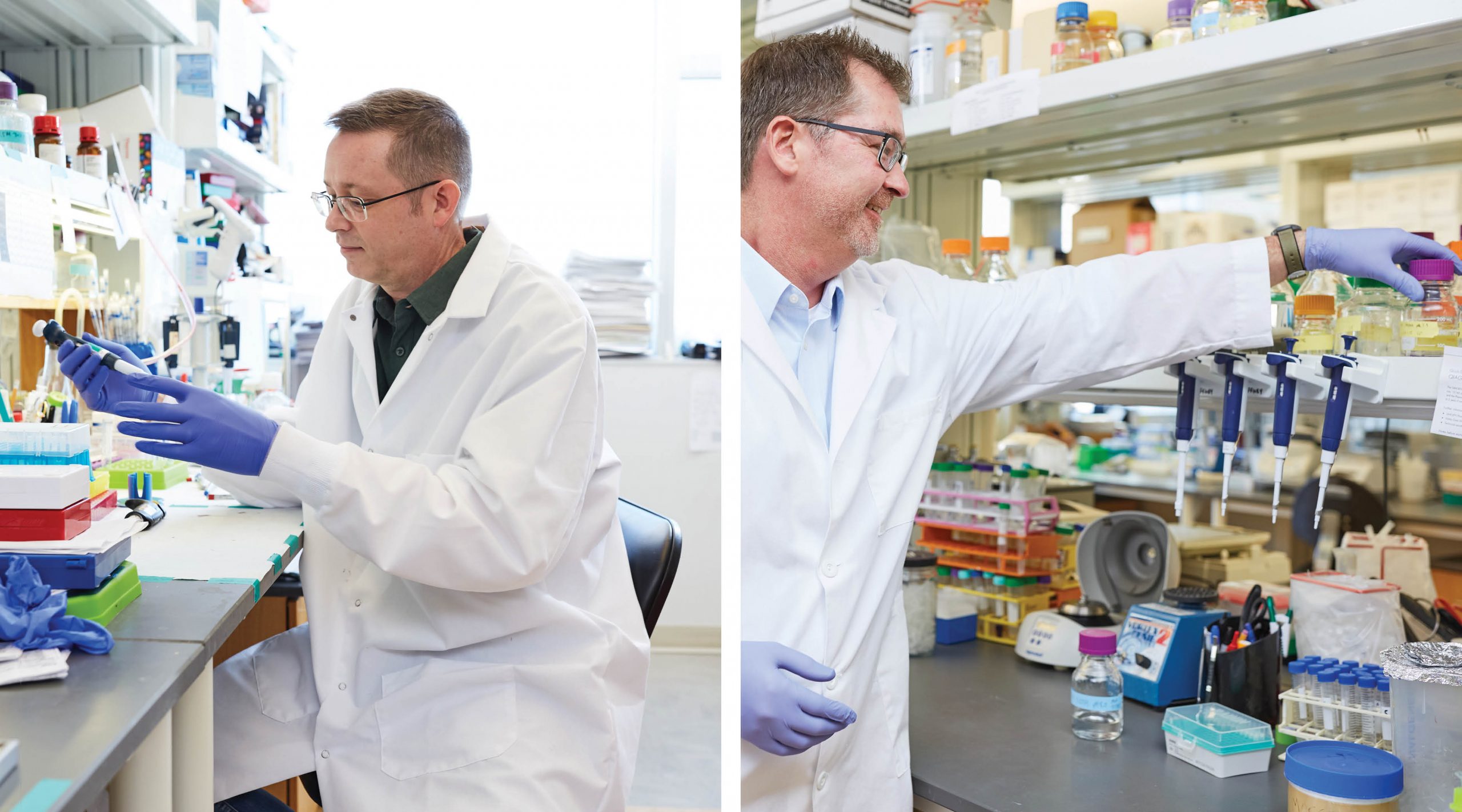July
A pair of OMRF scientists take a different approach to the study of healing.
Time, it’s said, heals all wounds. But we all know that’s not quite true.
“Everything must work just right for proper wound healing to take place,” says OMRF’s Dr. Lorin Olson. “It’s a delicate balance.”
Olson studies a compound in the body called platelet-derived growth factor. In new research, his team pinpointed the crucial role the growth factor plays in the healing process. Too much of it can lead to excessive scarring. Too little, and wounds fester.
The OMRF researcher is building on the findings to delve into the causes of keloids, thick, raised scars that most frequently form on the ears, shoulders, chest and cheeks of people of African and Asian descent. The discovery, he says, may have implications for other health conditions, “like atherosclerosis, where deadly plaque builds up in the arteries, as well as cancer.”
Meanwhile, Dr. David Forsthoefel also broke new ground on how to induce regeneration in damaged tissue. He did it working with sunflower-seed-sized flatworms called planarians, which can regenerate any body part. “If you cut one into 10 pieces, within a few days, you will have 10 planarians,” he says.
In a study published in the journal Nature Communications, Forsthoefel and his lab found that without lipids (“a fancy word for fats,” he says), regeneration slowed by 50%. According to OMRF’s Dr. Patrick Gaffney, the work offers important clues for understanding similar processes in our own bodies. “If future research shows that humans need additional lipids to regenerate tissue, we might discover a way of supplying those lipids where they’re needed to expedite healing.”
Chronic wounds represent a significant health issue for millions of Americans. Diabetes and other circulatory disorders can often lead to chronic foot ulcers, which can require amputation. This is one reason there are now more than 1,000 outpatient wound-care facilities in the country. And with over 70 million annual surgeries in the U.S., the need for wound care is rising sharply.
If insights from Olson, Forsthoefel and their colleagues can one day improve wound healing, it would bring much-needed relief to countless people. Because, right now, time alone isn’t doing the trick.



